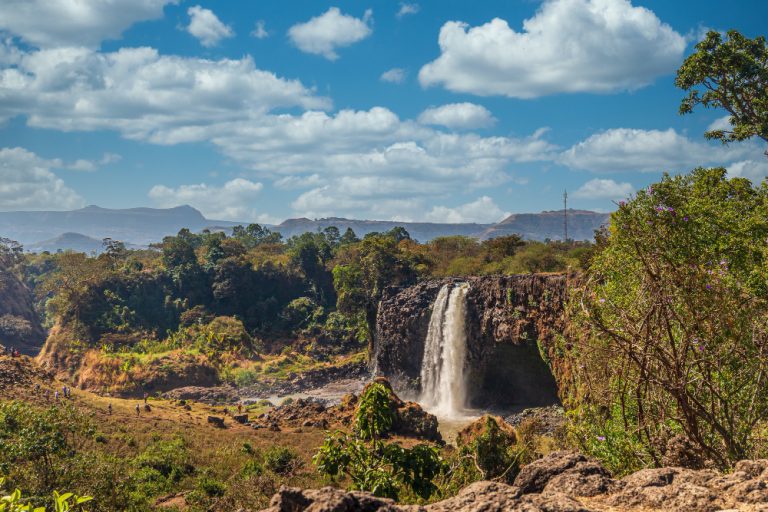A country with diverse landscapes and exotic wildlife, Ethiopia offers great experiences for those who enjoy the outdoors and adventure. The wild Simien Mountains and the exotic landscape of the Danakil Depression are just two of the country's many natural wonders.
This article will guide you through these stunning environments and provide tales of strange encounters with animals, such as those encountered by Ethiopian wolves and Gelada baboons. The country is a must-visit destination for all avid travelers due to its unique cultural past and abundance of fauna.
Ethiopia is known mostly as a cultural tourism destination, and with its fascinating history and vibrant culture, many visitors are content to focus solely on this side of the country. On the other hand, due to its enormous range of habitats, it has a very wide biodiversity. With more than 800 species, including at least 30 species indigenous to the state, birds are also noteworthy.
Sometimes, images of buffalo, giraffes, lions and elephants are also included. By booking an Ethiopian Airlines ticket, you can travel to discover the wildlife of Ethiopia. Airlines offer many services to their customers.
Bale Mountains
At an altitude of 4,200 metres, the lava-covered Bale Mountains are home to one of the largest forests in Ethiopia, as well as 78 different species of mammals, such as thriving populations of Ethiopian wolves, mountain nyala, menelik bush, Bale monkeys, and at least eight species of Rodents. In addition, the area is dotted with rivers, fertile grasslands and extensive alpine moors.
These rodents are the only food a wolf eats, especially mole rats. The black and white colobus monkey, olive baboon, leopard rock hyrax, warthog, jungle hog, and spotted hyena are among the other animals that call this place home. The countless species of birds that can be seen here include the yellow-fronted parrot, the blue-winged geese, and the spotted-breasted plover, which are unique to these mountains.
Simien Mountains
With an elevation of Ras Dashen reaching 4,500 metres, the Siemens Mountain Range is the largest and longest mountain range in Ethiopia. The mountains offer amazing views and some great options for trekking and hiking. The fact that locals live within Ethiopia's national parks surprises many tourists, but this is part of the agreement between communities and the government.
The majority of people show respect for animals, and it is not unusual to see many baboons hanging out near communities. Compared to their cousins, they are rather laid-back and gentle, and spend their days in large groups searching these high meadows for food. Here too, the Wallia ibex can be seen in seemingly inaccessible locations on the rock walls.

Omo Valley
The Omo Valley, among many mountainous regions, is warmer and wetter largely due to its lower elevation. The national parks here are home to lions, giraffes, elephants, buffalo, eland, leopards and many other plains animals. The river banks are fertile and productive. The riverside forest is home to a large population of monkeys, crocodiles, hippos and a large number of birds.
Notable species include vervet monkeys, black-and-white colobus monkeys, Bell's hunting owl, and de Brazza's monkey, which are found mostly in the tropical forests of Uganda and Congo. A variety of birds can be heard, if not seen, from the deep vegetation, including vermilion bee-eaters, white-cheeked bee-eaters, black-headed gnolls, orioles, weavers, barbets, cuckoos, African fish eagles, and warblers.
Gambella National Park
And since so few people realize it, it's not really on anyone's list of places they should see. Boma National Park in South Sudan borders Gambella, an area of lowlands and hot swamps criss-crossed by three large rivers that provide more than 27,000 square kilometers of exceptional animal habitat, of which 4,500 are in Gambella.
This vast expanse of little-known and unexplored wilderness has been integrated into a protected area larger than the entire ecology of the Serengeti, Kafue or Ruaha National Park. The main sources of income for the Anuak and Nuer people who inhabit the area are fishing and cattle herding.
Danakil depression
There are no other landscapes on Earth like those seen in the Danakil Depression. The unearthly landscape is created by seething lava lakes, massive salt flats that stretch forever, and vibrant mineral deposits. Although it is a hostile and terrifying environment, there is something captivating in its stark beauty.
The ability of species such as the Afar people in the Danakil Depression and the Gelada baboons in the Simien Mountains to adapt and thrive in such a wide range of environmental conditions in Ethiopia is evidence of the remarkable diversity of life on our planet.

